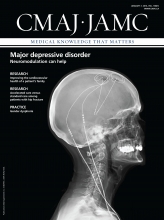The openness to try innovative solutions is the “most striking difference” between the health care systems of European countries and Canada, according to the Macdonald-Laurier Institute, a public policy think tank in Ottawa, Ontario.
Canada should look to Sweden and Switzerland for examples of potentially beneficial health reforms, including activity-based funding, more private provision of care and allowing doctors to practise under both private and public systems, the institute’s reports in A European Flavour For Medicine.
“I think if you want to stimulate productivity … you have to allow changes to enter into the system by outsiders,” explains Mattias Lundbäck, an economics researcher in Stockholm, Sweden, and the author of the report.
Similar recommendations were made earlier this year in a report comparing the health systems of Canada and Australia. Medicare advocates, however, suggest that health care should be regarded as a public service rather than a business. Introducing more private care and activity-based funding can lead to disproportionate value being placed on certain medical services, regional variations in care and inequitable access depending on income, they warn.
Canada spends more on health care than other developed nations with universal care, yet performs worse on several quality indicators, according to the Macdonald-Laurier report. The number of hospital beds available in Canada is substantially lower than the average for member nations of the Organisation for Economic Co-operation and Development (OECD). In 2009, Canada had 3.3 beds available per 1000 people, compared to the average of 5.5 beds.
In addition, Canada had fewer practising physicians per 1000 people (2.4) than the OECD average (3.1). Sweden and Switzerland had at least 3.5 physicians per 1000 people, states the report. Canadian patients also spend more time in hospital. The average length of stay in Canada was 7.7 days in 2009 compared to 5.7 in Sweden.
The report attributes these gaps to the different ways European countries fund and deliver health care. For example, Switzerland pays its hospitals on an activity-funded basis, which “involves paying providers for each individual they care for, based on the expected costs of treating the patient’s condition.”
Unlike under global budgets — the predominant way in which Canadian provinces fund hospital services — activity-based funding does not “retrospectively pay for all services provided to the patient, which provides a strong incentive for cost control by the provider.”
Meanwhile, in Sweden, allowing private delivery of health services alongside the public system has resulted in shorter wait times, states the report. In 2010, more than half of Swedish patients reported gaining access to a primary care provider within one day. In comparison, only 33% of Canadians were able to get appointments that quickly.
When taking lessons from other systems, a country should not focus on only one area, says Lundbäck. “I think it is more of a need to try to look at ways of doing things differently, and experimenting with models for health care deliveries and new organizational models.”








